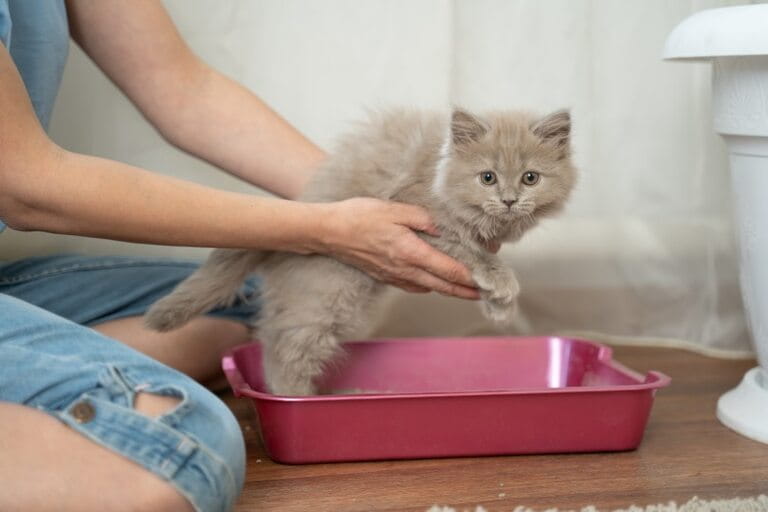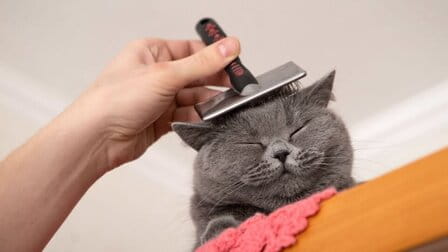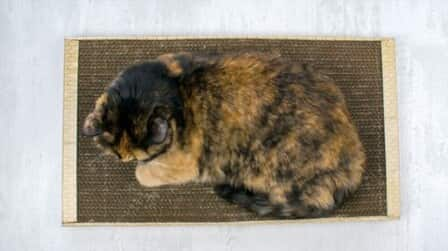When you first become a cat parent, probably one of the hardest parts is learning how to litter train a kitten without a mother. This can take some time to achieve, but it is definitely possible. In fact, the younger the cat is, the easier it gets to train, compared to mature ones. In the following sections, you are likely to find out how to do litter training for a kitten detailedly. Keep reading and explore!

When Are Kittens Ready for Litter Training?
Kittens are usually ready for litter training around 3-4 weeks of age. Before this time, they are completely dependent on their mother to stimulate elimination. The mother will lick the kittens' genitals to induce urinating or defecating. However, as they age, their bodies start to perform these functions on their own.
If you are raising an orphaned litter of kittens, you will need to stimulate them to potty for the first three weeks of their lives. This process can be time-consuming, as you must stimulate the kittens before and after bottle feeding. As kittens start to eat partially solid foods around their 3-week-old milestones, it is advisable to litter train them shortly after.
Adding to this, kittens can be trained to use a litter box by providing them with a shallow tray filled with a non-clumping, unscented litter. Place the kittens in the litter box after meals or when they wake up from a nap. Praise them when they use the litter box and clean up any accidents outside of it. With patience and consistency, most kittens can be fully litter trained by the time they are 4 weeks old.

How Important Is Litter Training for Kittens?
Litter training is an important aspect of a kitten's development. Without proper litter training, kittens may be eliminated in inappropriate places, such as on carpets or furniture. This can lead to unwanted odors and damage to your home.
Additionally, litter training can help prevent the spread of diseases and parasites between kittens. When kittens are trained to use a litter box, their waste is contained in one area, making it easier to clean up and dispose of properly. This can help prevent the spread of bacteria and other harmful pathogens.
Furthermore, litter training can help establish good hygiene habits in kittens. By providing a clean and comfortable litter box, you encourage your kitten to maintain good habits as they grow older.
Finally, litter training can help promote the bond between you and your kitten. By spending time together during litter training, you can establish trust and strengthen your relationship. Overall, litter training is an essential part of a kitten's development that can help ensure their health, happiness, and well-being.

How to Litter Train A Kitten without Mother? A Detailed Guide for Parents
As promised, now it is time to dive into the guide on how to litter train a kitten without a mother!
What do you need to prepare to train a kitten without a mother?
- Kennel or carrier: Having a kennel or carrier when you first adopt a kitten is highly recommended. This not only helps them to calm down and feel a sense of a safe spot but also lets them be close to the litter box.
- Litter box and sand: Evidently, you will need these two to complete the litter training process for your kitten. Choosing a litter box and sand may take a while since you have to consider factors, such as your cat's preferences.
- Paper towel or old newspaper: One more thing you need to prepare for litter training a kitten without a mother is paper towels or newspaper. This would become a liner for your kitten during the first days.

6 simple steps to litter train a kitten without mother
1. Restrict the space your kitten can reach
This applies to many pieces of pet training, including litter training for kittens in general. First and foremost, you should limit the kitten's area because this process will begin so early. As a matter of fact, it may begin right the moment you bring the kitten home. So, it's time to get to work once you have them set up with a comfortable living space in a safe spot.
2. Introduce the litter box to your kitten
To introduce your kitten to the litter box, choose a shallow tray filled with a non-clumping, unscented litter. Show your kitten the litter box and gently place them inside after meals or when they wake up from a nap. Praise your kitten when they use the litter box and clean up any accidents outside of it. If your kitten seems hesitant to use the litter box, try placing them in the box more frequently or adding a bit of soil or litter from their previous environment to the box. With patience and consistency, most kittens can be fully litter trained within a few weeks.

3. Teach the kitten to dig with its paws
To conduct this step, you just simply need to demonstrate to your cat directly. For some cats, the paw-digging demonstration only takes one or two times to learn. Others may take longer. But overall, teaching them to dig with their paws should not be long or challenging.
4. Leave a little waste after every cleaning
You won't need to clean the whole thing after your kitten goes potty every time in the first days of their litter training. The purpose of leaving a bit of waste is to remind the kitten of its "restroom".
5. Take your kitten to the litter box after meals and naps
The next step in litter training a kitten without a mother is taking him or her to the litter box after her meal or nap. The rationale behind this refers to the needs of kittens. They usually need to go potty during these times. Adding to that, this 5th step would help to remind them about their litter box and let them associate their needs with the box.
6. Start allowing the kitten more space in the house
After 1 or 2 weeks of using the litter box, you can slowly allow your cat to have more space. But don't take it too fast. Remember to do it gradually in about 2 or 3 weeks if you need to.

Note: You may have more than 1 litter box for the kitten, should it help your litter training go more smoothly.
FAQs
What is the fastest way to train a kitten?
There is no one "fastest" way to litter train a kitten, as it may take some time and patience to properly train them. Yet, there are tips that can help speed up litter training. These include placing the litter box in a convenient location, using kitten litter that attracts them to the box itself, and gently placing the kitten in the litter box after meals and when they wake up.
It's also important to use a shallow litter box with low sides and multiple boxes for multiple cats. Additionally, providing comfortable litter and using non-toxic litter can help encourage litter box use. With patience and consistency, most kittens can be fully litter trained within a few weeks.
At what age that kittens pee and poop on their own?
Most kittens start to learn to pee and poop on their own around 3-4 weeks of age. Prior to this age, kittens are dependent on their mother to stimulate elimination or the help of their owner.
Kittens may require assistance until around 3 weeks old. It's important to monitor the kitten's urination and defecation habits and seek veterinary care if there are any changes or concerns.
Conclusion
That's everything on how to litter train a kitten without a mother. When doing this, it is crucial to stay patient since the process may take you a few weeks. Nonetheless, if you follow our steps, you will likely succeed eventually. Should you have any questions, don't hesitate to reach out and share! We are honored to give a helping hand.













